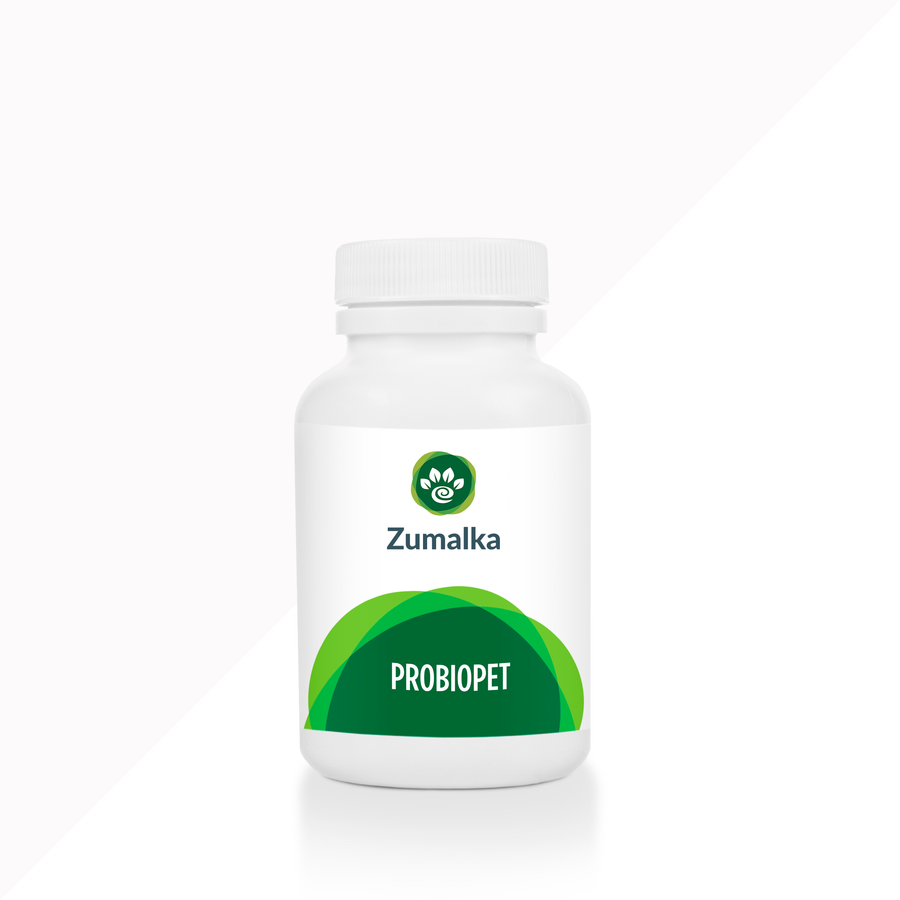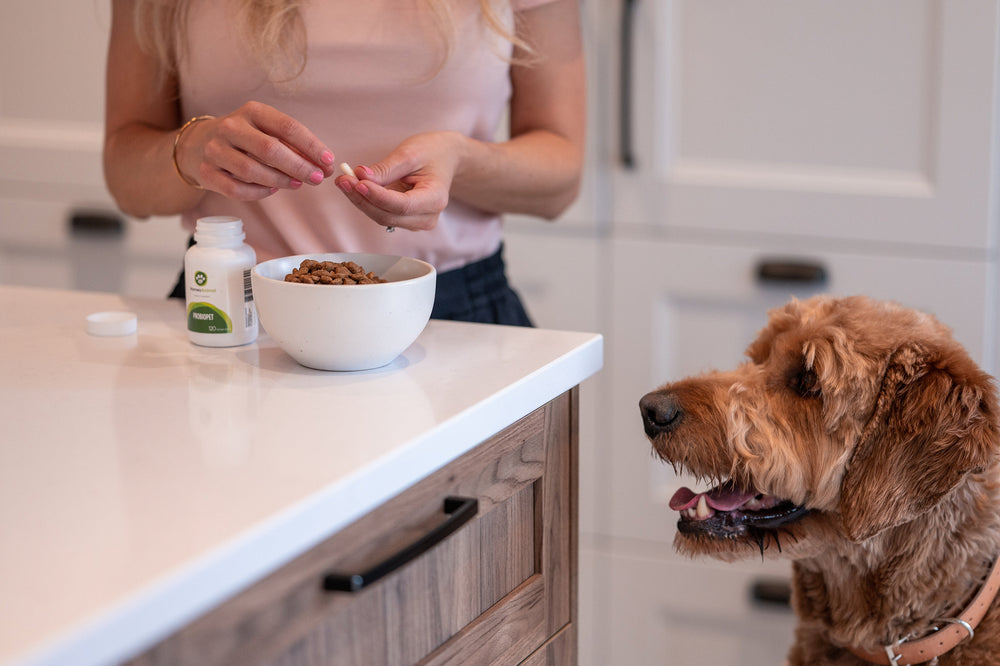Vet-Verified: 10 Benefits of a Raw Dog Food Diet for Your Pet’s Health
List of Contents
Raw feeding has gained significant popularity in recent years, with more pet owners seeking natural alternatives to traditional cooked dog food. Commercial raw diets are now widely available in pet stores, reflecting this growing trend.
This feeding style provides pets with a diet of uncooked foods, including raw meat, edible bones, and select fruits and vegetables. This natural approach is intended to reflect how animals would eat in the wild.
Raw feeding remains a debated topic, with passionate views on both sides. However, many pet owners report noticeable health improvements, and this article explores the key benefits advocates say a raw diet can offer.
Top 10 Health Benefits of a Raw Diet for Dogs

This section will walk you through the key health benefits dogs may experience on a raw food diet, from improved digestion to enhanced energy. Each benefit is supported by relevant scientific studies to highlight real-world results.
#1. Improved dental health and naturally cleaner teeth in dog
Chewing raw meats and bones provides natural dental stimulation that helps reduce plaque and tartar buildup. This mechanical action supports cleaner teeth and may lower the risk of dental disease in dogs.
#2. Healthier skin and a shinier coat with a raw diet for dogs
Raw diets provide essential fatty acids and highly digestible proteins that support healthy skin and a shiny coat. Since up to 30% of a dog’s dietary protein is used for skin and coat maintenance, quality nutrition makes a visible difference.
Many dogs on raw diets experience reduced skin irritations and less itching. These improvements are often linked to the diet’s higher fat content and overall nutritional quality, which support healthier skin from within.
#3. Managing food allergies and sensitivities with a raw dog food diet
Raw dog food diets are naturally grain- and gluten-free, eliminating common allergens such as corn, wheat, and soy. This species-appropriate nutrition supports gut health and strengthens the immune system, helping reduce food sensitivities and allergic reactions.
Many pet owners report rapid improvement in symptoms such as vomiting, diarrhea, ear infections, and excessive scratching after switching to a raw diet. These changes suggest better digestive health and reduced allergic responses.
#4. Better digestion and firmer stools on a raw diet
A raw diet aligns with a dog’s natural digestive system, which is built to process raw meat and bones efficiently. Factors like low stomach pH, balanced gut flora, and a short digestive tract support optimal digestion.
Raw feeding often results in smaller, firmer, and less odorous stools due to improved nutrient absorption and digestion. It may also support healthy anal gland function and significantly reduce flatulence in dogs.
#5. Improved energy and endurance with a raw dog food diet
Raw diets are rich in proteins and healthy fats, offering dogs a steady source of energy throughout the day. Unlike carb-heavy kibble, they help prevent energy spikes and crashes, promoting better stamina and focus.
With fewer fillers and artificial additives, raw diets place less strain on your dog’s organs during digestion. This allows more energy to support vital functions, including immune health, mobility, and cognitive performance.
#6. Stronger immune system support through a raw diet for dogs
Since 70–80% of a dog’s immune system resides in the gut, supporting digestive health is key to overall immunity. A raw diet of fresh, natural foods helps strengthen the gut, boosting immune function naturally.
Raw food offers readily absorbable vitamins and minerals that directly support your dog’s growth, healing, and overall development. This enhanced nutrient availability contributes to stronger health and better long-term wellness.
#7. Raw feeding in dogs for better weight control and physical health
A high-protein, low-carb raw diet supports healthy weight control and promotes a lean, fit body in dogs. Meat’s low glycemic load helps regulate blood sugar and reduces the risk of fat accumulation.
Biologically appropriate raw dog food is highly digestible, allowing dogs to absorb maximum nutrients from their meals. This supports a naturally lean, muscular physique and helps maintain healthy muscle tone.
#8. Increased energy and quality of life for aging dogs
While aging is inevitable, a species-appropriate raw diet can help senior dogs stay active and healthy. Rich in lean proteins, healthy fats, and natural antioxidants, it supports joint function, gut health, and sustained energy levels.
#9. Better mobility and joint health in dogs with a raw diet
A raw, whole-food diet provides species-appropriate nutrients that help reduce inflammation linked to poor nutrition. This can support joint health and improve mobility, especially in dogs prone to stiffness or age-related discomfort.
Bones and cartilage in a raw diet naturally provide calcium, chondroitin, and glucosamine, key nutrients that help reduce joint inflammation. These compounds support joint strength and flexibility, promoting comfort and mobility in active or aging dogs.
#10. Reduced hyperactivity and improved behavior in dogs
A dog’s behavior is closely linked to nutrition through the gut-brain connection. Lean proteins, healthy fats, and omega-3s in a raw diet support brain function, digestive balance, and calmer, more focused behavior.
What Makes Raw Diets Effective? Key Nutrients and Bioavailability Explained
- Raw diets are often viewed as a return to the ancestral eating patterns of dogs, mimicking what canines consumed before domestication. This natural approach focuses on whole, unprocessed foods to support overall health and vitality.
- Muscle meat is a key element of a raw diet, supplying vital proteins, amino acids, vitamins, and minerals. These nutrients help fuel the body, support cellular function, and promote strong muscles and overall health.
- Ground bone is an essential part of raw diets, providing key nutrients like calcium, phosphorus, zinc, and healthy fats from the marrow. These nutrients support strong bones, healthy joints, skin health, and optimal digestion in dogs.
- Organ meats, such as liver, kidney, and pancreas, are often called nature’s multivitamins due to their dense nutrient profile. They’re rich in essential vitamins (A, B, C, D, K) and minerals like iron, zinc, copper, and selenium, supporting overall canine health.
- Vegetables and fruits in a raw diet supply phytonutrients, essential vitamins, minerals, and healthy plant-based fats. These ingredients complement animal-sourced nutrients, supporting immune health, digestion, and overall nutritional balance for dogs.
- Raw diets offer superior bioavailability, allowing dogs to absorb nutrients more efficiently from unprocessed, animal-based sources. This species-appropriate nutrition supports optimal health by delivering the nutrients their bodies are naturally designed to utilize.
Balancing the Raw Diet Debate: Insights and Cautions from Exper
- Although many dog owners praise the benefits of raw feeding, most supporting evidence is anecdotal. Comprehensive scientific studies on its long-term effects are still limited, highlighting the need for further research and expert guidance.
- Homemade raw diets can pose a risk of nutritional imbalances if not properly formulated, potentially leading to health issues over time. To ensure complete and balanced nutrition, it's essential to consult a qualified dog nutritionist.
- Raw pet food can contain harmful pathogens, such as Salmonella and E. coli, as well as parasites, which are typically destroyed through cooking. These bacteria pose health risks to both pets and humans, especially through cross-contamination and potential antibiotic resistance.
- Feeding bones, especially if improperly prepared, can lead to serious risks such as choking, tooth fractures, constipation, or intestinal blockages. Pet owners should choose bone types carefully and supervise feeding to minimize potential hazards.
- Several leading veterinary organizations, including the AVMA, AAHA, CVMA, and WSAVA, advise against raw meat-based diets due to potential health and safety risks. They often recommend complete, commercially prepared diets to ensure balanced nutrition.
- Raw feeding may pose health risks in households with pregnant individuals, young children, seniors, or immunocompromised members. Due to the potential for bacterial contamination, extra caution or alternative diets are often recommended in these situations.
- Dogs with conditions like late-stage kidney or liver disease, pancreatitis, cancer, or weakened immune systems may not tolerate raw diets well. Puppies also require exact calcium-to-phosphorus ratios for proper bone growth, making raw feeding less suitable during development.
- Feeding a high-quality raw diet can be more costly than commercial kibble and often requires extra time for preparation and safe handling. Pet owners should consider the financial and time commitments involved in maintaining a raw feeding routine.
Before changing your dog’s diet, especially when exploring raw feeding, it’s important to consult a veterinarian or certified pet nutritionist. To ensure safety and balanced nutrition, opt for commercially prepared raw diets from trusted manufacturers that adhere to strict hygiene and quality standards.
Safe handling is critical when feeding a raw diet to reduce the risk of harmful bacteria. Always use separate utensils and bowls, defrost food properly, sanitize surfaces, and wash hands thoroughly after preparation.
Final Thoughts: Choosing the Best Diet for Your Dog
While many dog owners report positive results from raw feeding, it's important to understand the potential risks. A balanced approach, guided by consultation with a veterinarian or a pet nutritionist, ensures your pet’s diet is both safe and beneficial.
Pet owners are responsible for deciding whether a raw diet is right for their dogs. Understanding both the potential advantages and drawbacks is key to making a confident, well-informed choice for your pet’s well-being.
When considering a raw diet, safety for both the pet and the household should be the top priority. Equally important is ensuring the diet is complete and balanced to support long-term health and well-being.
FAQs
What are the benefits of a raw diet for dogs?
A raw diet for dogs may support healthier skin, shinier coats, improved digestion, better weight management, and stronger teeth. Many owners also report increased energy, reduced allergies, and overall enhanced wellness with raw feeding.
What is the disadvantage of raw dog food?
Raw dog food poses potential risks such as bacterial contamination, unbalanced nutrition, and bone-related injuries. It also requires careful handling, safe storage, and expert guidance to ensure it’s appropriate and safe for your dog.
Do vets recommend raw dog food?
Veterinary opinions on raw dog food vary. Some holistic vets support it for its natural benefits, while major veterinary organizations often caution against it due to risks like bacterial contamination and potential nutritional imbalances.
Is it better to give dogs raw or cooked food?
Whether raw or cooked food is better for dogs depends on individual needs. Raw diets may offer natural benefits, while cooked diets can reduce health risks. Veterinary guidance ensures the best choice for your pet.
Can I mix raw and cooked food for my dog?
Yes, you can mix raw and cooked food for your dog, but it should be done carefully. Improper balance or sudden changes may disrupt digestion. Always consult a veterinarian or pet nutritionist for safe guidance.
What is the best raw food for dogs?
The best raw food for dogs includes a balanced mix of muscle meat, organ meat, edible bone, and select fruits and vegetables. Choose high-quality, species-appropriate ingredients or trusted commercial raw diets for safety.
How much raw food should I feed my dog?
Feed your dog approximately 2–3% of their ideal body weight in raw food daily, divided into two meals. Adjust amounts based on their age, activity level, and health, and consult a vet or pet nutritionist for guidance.
Should I add rice to my dog's raw food?
Adding rice to a raw dog food diet isn't typically necessary, as raw diets focus on species-appropriate, low-carb nutrition. However, in some cases, vets or pet nutritionists may recommend it for specific digestive or energy needs.
Is it okay to add water to raw dog food?
Yes, adding water to raw dog food is generally safe and can aid digestion and hydration. It’s especially helpful for dogs that don’t drink much water or prefer softer textures. Always use clean, fresh water.
Why is my dog so hungry on raw food?
Your dog may appear hungrier on a raw diet due to higher metabolism, better food palatability, or insufficient portions. Double-check feeding amounts and consult your vet or pet nutritionist if increased hunger continues or worsens.
How to introduce a raw diet to a dog?
To introduce a raw diet, start gradually by mixing small amounts with your dog’s current food. Increase the raw portion slowly over 7–10 days. Monitor digestion and consult your vet or pet nutritionist to ensure a smooth, balanced transition.
Can raw food cause diarrhea in dogs?
Raw food may cause diarrhea in dogs, particularly during the transition or if the diet lacks balance. Introduce it slowly and consult a veterinarian or pet nutritionist to ensure safe, proper feeding.
Do dogs gain weight on a raw diet?
Dogs can gain weight on a raw diet if portion sizes are too large or not properly balanced. Monitoring body condition and feeding the correct amount based on activity level and size helps maintain a healthy weight.










It’s perfect time to make some plans for the future and it’s time to
be happy. I have read this post and if I could I
wish to suggest you few interesting things or advice. Perhaps you can write next articles
referring to this article. I want to read even more things about it!
Here is my website :: New Lighter
Heya i am for the first time here. I came across this board and I
find It really useful & it helped me out a lot. I hope to give
something back and aid others like you aided me.
Also visit my blog … Bandar Ceme
It’s an remarkable post designed for all the web viewers; they will take advantage
from it I am sure.
My blog Internet Addiction Self Help
Spot the ground beef food poisoning symptoms on best of the vegetables.
Raw diet and you have a photo with an artificial bone which has no nutritional value or benefits. One which can cause much grief if not fatal for dogs!!!?
Leave a comment